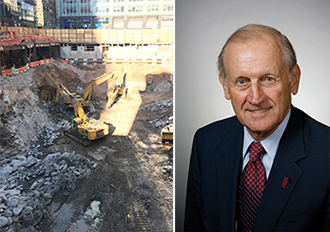Trending
Construction spending in city to soar to $128B through 2018: report
But uncertainty over 421a still clouds over residential sector: New York Building Congress

Construction spending in New York City is expected to soar to $127.5 billion by the end of 2018, signaling that the building boom of the past few years still has legs.
In its latest report, the New York Building Congress predicts that spending will hit $43.1 billion in 2016, a 26 percent increase from 2015’s $34.4 billion.
The organization’s latest forecast falls in line with its earlier predication in 2015 that spending was on track to cross the $40 billion threshold in 2016 — for the first time in the city’s history. The building boom is expected to continue in 2017, when construction spending is projected to reach $42.1 billion and then $42.3 billion in 2018. When adjusted for inflation, 2016’s estimated spending represents a 47 percent increase from the city’s last building boom in 2007.
Non-residential construction is driving much of the spending, with $17 billion projected in 2016. That’s a 27 percent increase from last year, according to the report. In a separate report, the Building Congress asserted that office construction is having a moment, predicting that more than 20 million square feet of new space will be added over the next five years, much of it in Hudson Yards.
Residential construction is estimated to reach $13.4 billion in 2016, up from 2015’s $12.7 billion. Building Congress President Richard Anderson noted that while residential construction continues at an historically high rate, there are many uncertainties, including the future of 421a, which has been defunct for nearly a year now.
“The big question is whether this pace can be sustained once all the projects currently in the pipeline have been completed,” Anderson said in a statement. “It is going to be very tough, if not impossible, without a renewal of the 421a tax reduction program or better progress on the de Blasio’s administration’s efforts to rezone areas of the City to accommodate greater density and more affordable units.”
Government spending on public works — lackluster in recent years — is forecasted to see a 56 percent year-over-year spike. The report estimates that such spending will only reach $12.7 billion in 2016 and then $14.3 billion in 2017. Still, government spending on infrastructure is woefully below the high of 2008, when it reached $16.3 billion, according to the report. The city is expected to only spend $6.7 billion on infrastructure this year.
In its report, the Building Congress notes that Gov. Andrew Cuomo announced a $100 billion statewide infrastructure initiative last year, which includes the transformation of part of the James A. Farley Post Office into Moynihan Train Hall. Now, the report states, the governor, state, city and the private sector just need to figure out how to “fund and deliver” these projects. The organization also urges the State Legislature in its report to expand design-build — a project system in which a single contractor tackles both the design and construction — to all state agencies. Earlier this year, the state expanded design-build authority to the Empire State Development Corporation.




